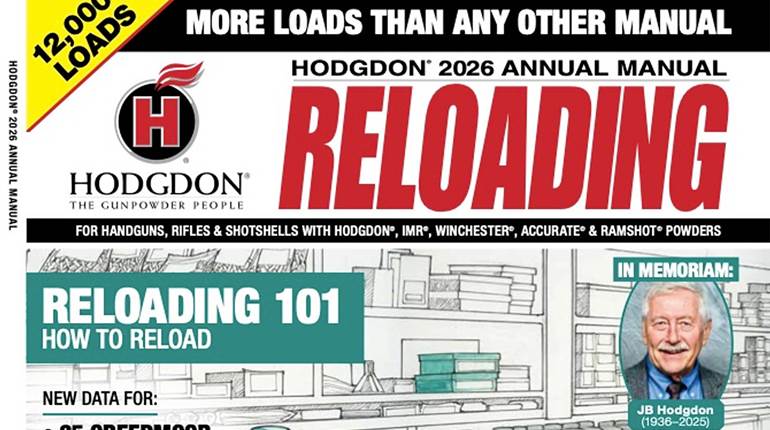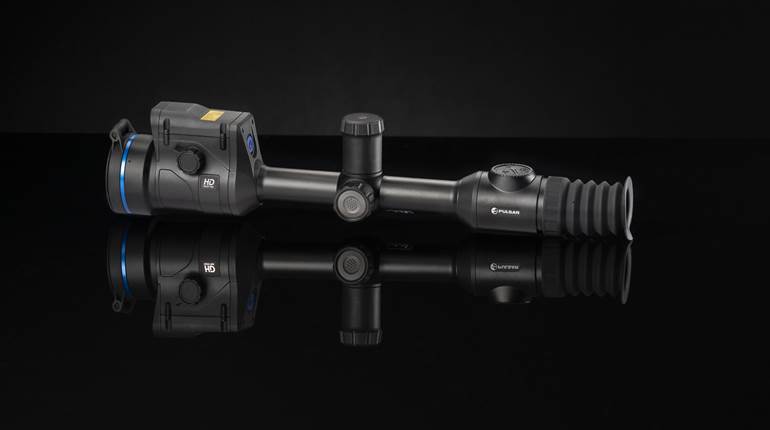
Throughout my handloading career, I’ve loaded close to half a million rounds of ammunition across dozens of cartridges. With each experience, I generally have some sort of epiphany, however, none has ever rivaled the one that I reached during my very first 20 rounds. When I first started measuring powder all that I had to my name was a balance beam scale, a thrower and a trickler.
After spending something like an hour to precisely weigh out just those 20 charges and seat bullets, I realized that there had to be a better way. That very night I ordered my first powder dispenser, the Hornady Lock-N-Load Auto Charge. While it was far better than weighing charges by hand, it wasn’t perfect.
The Lock-N-Load’s largest shortcomings were due to the limits of available technology at the time. I feel old writing that, but the truth is electronic circuitry grows at an exponential rate, and one doesn’t have to be around very long to make statements like above. Just a few short years later, we have far more sophisticated chips and circuit boards at our disposal, and Hornady has capitalized on this with a brand new, fully-revamped powder dispenser: the Auto Charge Pro.

The Auto Charge Pro keeps what we loved about the old unit and enhances the features that needed a little work. Most of us that have used the previous model or other brands built with the same technology can attest that certain powders were just destined to overthrow. Nothing was more annoying than that dreaded “beep” letting you know that your powder charge needs to be corrected, which, in most cases, takes longer than just dumping it and starting over.
The new revision is built with intelligent circuitry that slows or stops the spout as the target weight is approached. When you input your target charge weight, it gives a recommended speed and time setting based on how heavy it is. Speed can be varied from a scale of 0.1 to 10.0 in 1/10th increments giving far more adjustability than the old choices of “slow,” “medium” and “fast”.
You may have noticed that there is also a new setting: time. This setting dictates how long it will spin before it goes into that second, slower stage. Speed simply dictates how fast the tube will spin, which is directly proportional to how fast the initial amount of powder will flow into the pan.

At the very end of the second stage, we see the new, smarter circuitry at play as it gives itself a pause as a change in weight is detected. As those last granules hit the pan, the Auto Charge Pro stops and confirms that it needs more powder to meet the target instead of just dispensing at a rate that it hopes is slow enough to keep up with the scale's electronics. In other words, it does exactly what a human would do with a trickler.
Something else that I enjoyed was that, if you are a fan of the old three-option system, Hornady included a very similar function. By holding down “ENTER + 8“ you can select the low, medium or high profile. It pays to start with one of these and then fine-tune as you go. This is precisely what I did as I set up the unit to best dispense one of my pet loads.
I started with the medium setting and then adjusted up both speed and time until the unit started to overthrow. Once it did, I backed it down and saved this modified profile in one of the available slots, also a new feature.

Aside from the electronics, there was a major overhaul to the external features as well. The new touchscreen controls allow for a gentler press than the old-style buttons. This is important when you are trying to change a setting without sliding the machine, potentially requiring a new calibration.
The Auto Charge Pro also has a built-in bubble level, which lets you set it up in the same position every time. While it is minuscule. there can be the variance of a tenth of a grain or so if equipment like this is sitting on an angle. I have long known this and have previously solved the problem by chalking an outline on my bench where I use it to make sure that it's consistent each time.
Of course, this does absolutely nothing if I am reloading in a different location, which does happen occasionally. Also to help aid consistency, the scale plate sits in an oval slot as opposed to a round one helping to better distribute the weight across the actual weighing mechanism, ensuring that a lopsided charge is not weighed differently. The clean-out system also took a bit of an overhaul.

It better protrudes from the main part of the unit and allows you to more easily dump powder straight back into its container. Hornady also retained the removable powder hopper to more easily get the last bits of powder out. I'm a big fan of this, as it helps to stave off the temptation of just leaving your powder in it, which is always a bad idea. Lastly, the entire unit is built on a smaller and more regularly shaped housing, freeing up some room on your bench.
I evaluated this product as I put together a few dozen 6.5 mm Creedmoor rounds that I know to be sub-MOA accurate. These loads consist of Hodgdon H4350 and Hornady 140 gr. ELD Match bullets. The intention was to test-fire the ammunition made from the new powder dispenser against the loads that were made with the previous unit, consisting of the very same components from the same lots.

We found the perfect range day with next-to-no wind to put them side-by-side and shot them from a bench from an accurate rifle. The ammunition made with the Auto Charge Pro-shot just as well as they should and maybe even a little better over the rounds made from the older dispenser. Summing it up, I think that functionality alone warrants the upgrade to Hornady’s newest offering.
If you are just getting into the reloading game, this is a night-and-day option to manually weighing your powder. Although it wasn't expected (mainly because they are both built to 1/10 grain accuracy) the reduced group sizes were also a nice bonus. I credit the increased consistency to a more thoughtful design, particularly around the unit leveling system and the interface of the scale plate to the actual scale mechanism. In my opinion, the only way that Hornady can make this better is to send it pre-filled with H4350. For more information, visit hornady.com.




































